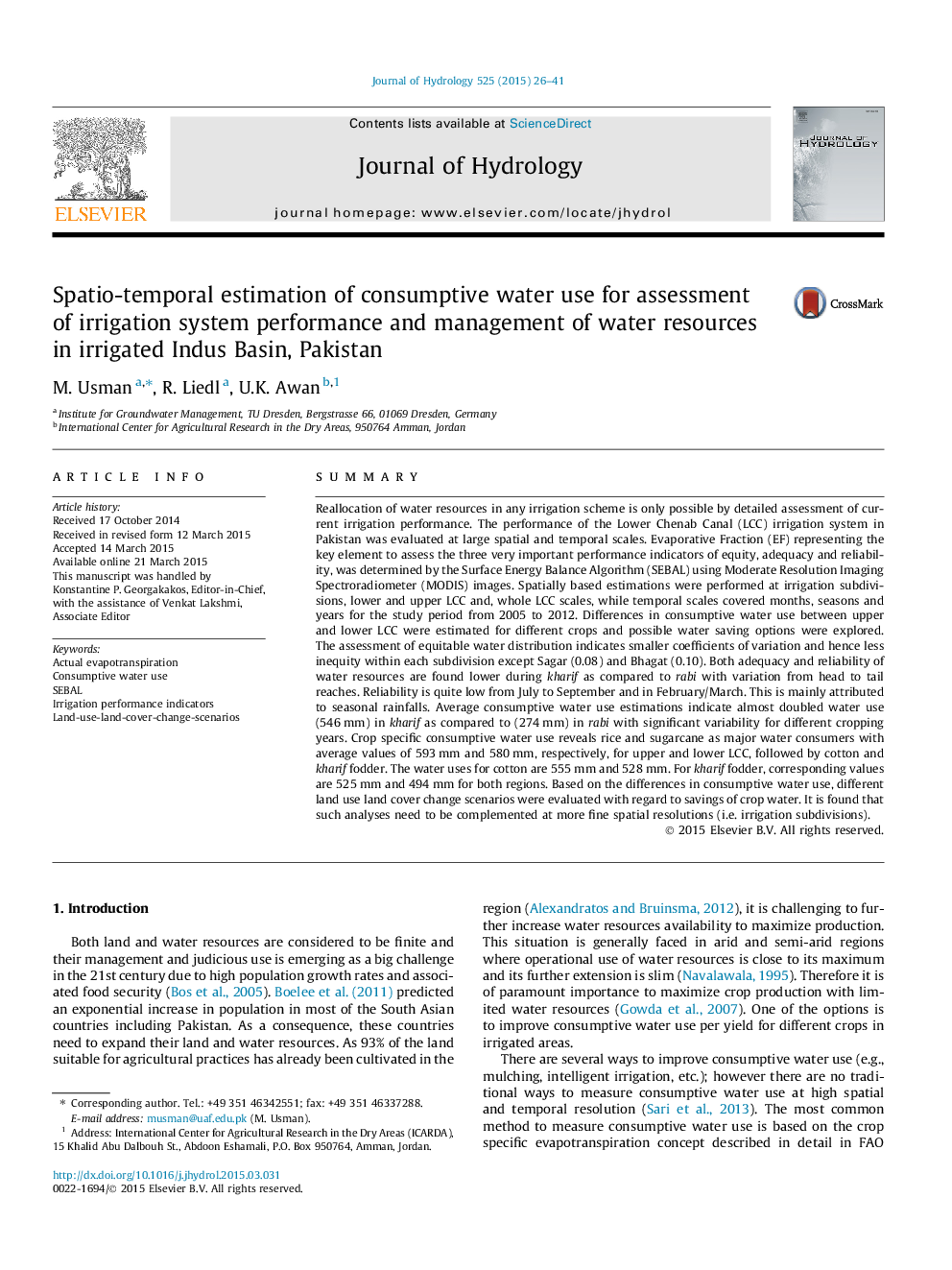| Article ID | Journal | Published Year | Pages | File Type |
|---|---|---|---|---|
| 6410573 | Journal of Hydrology | 2015 | 16 Pages |
â¢We evaluated the performance of irrigation scheme.â¢The irrigation system is less adequate and reliable during kharif.â¢There is no problem regarding equitable distribution of irrigation water.â¢Water use by crops is double in kharif as compared to rabi.â¢There are options of water saving by adopting different land use change scenarios.
SummaryReallocation of water resources in any irrigation scheme is only possible by detailed assessment of current irrigation performance. The performance of the Lower Chenab Canal (LCC) irrigation system in Pakistan was evaluated at large spatial and temporal scales. Evaporative Fraction (EF) representing the key element to assess the three very important performance indicators of equity, adequacy and reliability, was determined by the Surface Energy Balance Algorithm (SEBAL) using Moderate Resolution Imaging Spectroradiometer (MODIS) images. Spatially based estimations were performed at irrigation subdivisions, lower and upper LCC and, whole LCC scales, while temporal scales covered months, seasons and years for the study period from 2005 to 2012. Differences in consumptive water use between upper and lower LCC were estimated for different crops and possible water saving options were explored. The assessment of equitable water distribution indicates smaller coefficients of variation and hence less inequity within each subdivision except Sagar (0.08) and Bhagat (0.10). Both adequacy and reliability of water resources are found lower during kharif as compared to rabi with variation from head to tail reaches. Reliability is quite low from July to September and in February/March. This is mainly attributed to seasonal rainfalls. Average consumptive water use estimations indicate almost doubled water use (546Â mm) in kharif as compared to (274Â mm) in rabi with significant variability for different cropping years. Crop specific consumptive water use reveals rice and sugarcane as major water consumers with average values of 593Â mm and 580Â mm, respectively, for upper and lower LCC, followed by cotton and kharif fodder. The water uses for cotton are 555Â mm and 528Â mm. For kharif fodder, corresponding values are 525Â mm and 494Â mm for both regions. Based on the differences in consumptive water use, different land use land cover change scenarios were evaluated with regard to savings of crop water. It is found that such analyses need to be complemented at more fine spatial resolutions (i.e. irrigation subdivisions).
